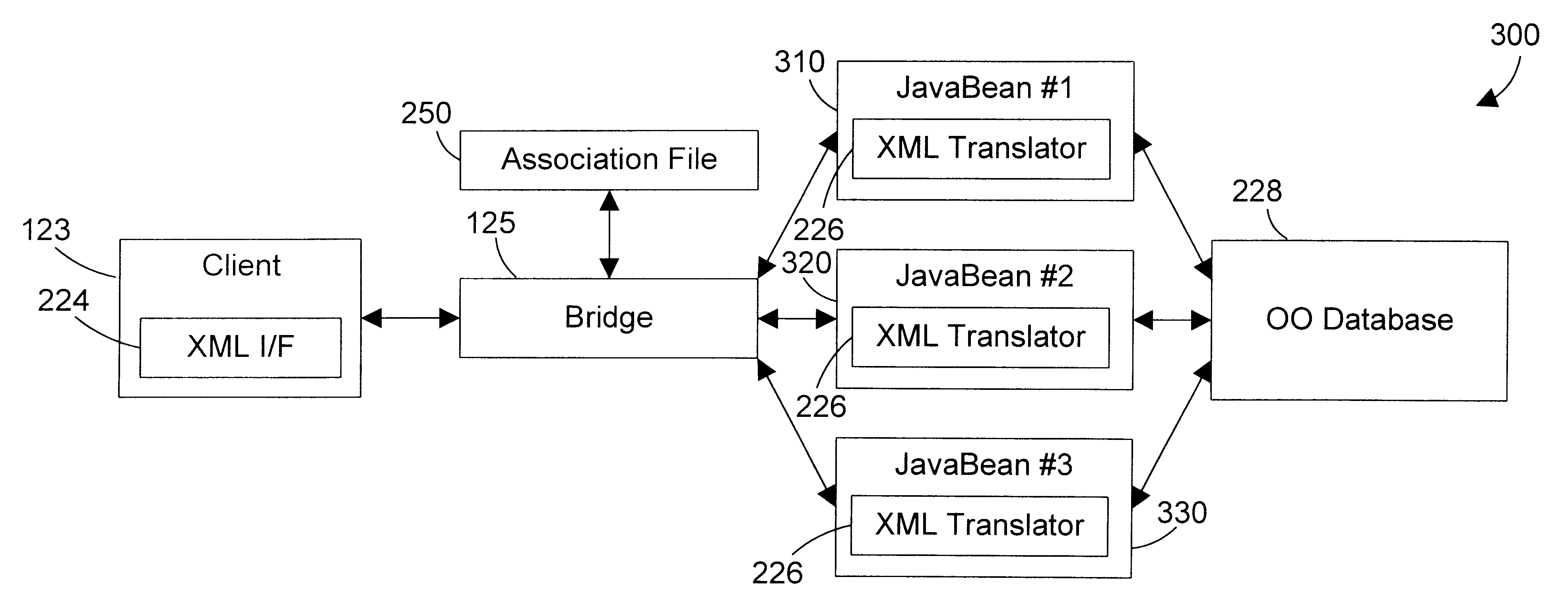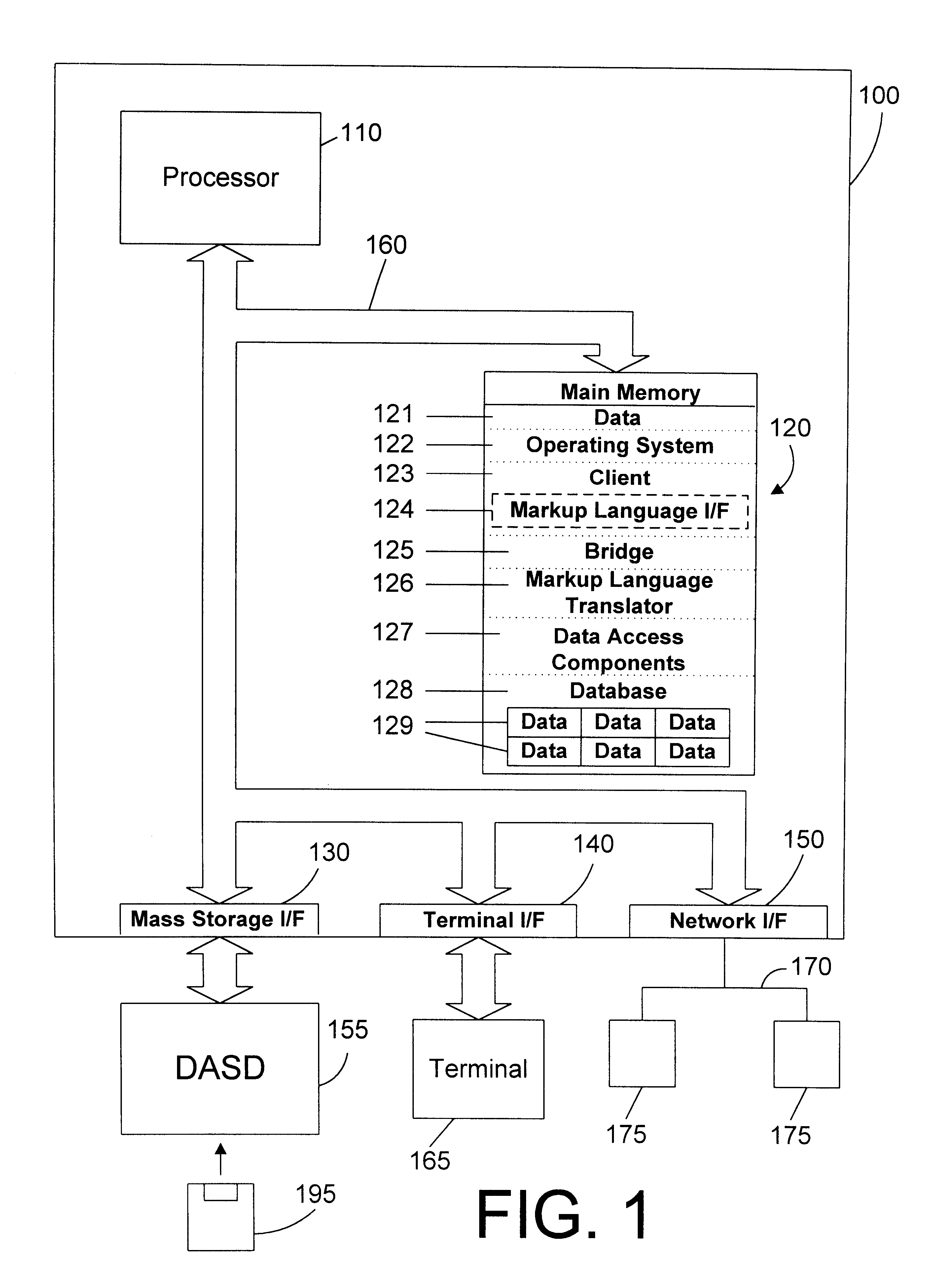Tagged markup language interface with document type definition to access data in object oriented database
a markup language and object oriented database technology, applied in the field of computer systems, can solve problems such as unfavorable or problematic wide-spread dissemination and use of data
- Summary
- Abstract
- Description
- Claims
- Application Information
AI Technical Summary
Benefits of technology
Problems solved by technology
Method used
Image
Examples
first embodiment
Referring to FIG. 2, a system 200 according to the invention includes client 123 coupled to bridge 125, which is coupled to an association file 250 and one or more JavaBeans, such as JavaBeans 210, 220, and 230, which are in turn coupled to an object oriented database 228. Client 123 includes an XML interface 224, which is one suitable example of markup language interface 124 of FIG. 1. Bridge 125 includes an XML translator 226, which is one suitable example of markup language translator 126 of FIG. 1. The function of bridge 125 is discussed in more detail below. JavaBeans 210, 220 and 230 are suitable examples of data access components 127 of FIG. 1. In the preferred embodiment, each JavaBean defines the structure of data held in a table or object within the database 228, and each access to a particular data type is handled by the corresponding JavaBean. Database 228 is preferably an object oriented database, which is one suitable example for database 128 of FIG. 1.
The operation of...
second embodiment
Referring to FIG. 3, a system 300 in accordance with a second embodiment includes many of the same elements as system 200 of FIG. 2. The primary difference is that XML translator 226 has been moved out of the bridge 125, and into each of the JavaBeans. The bridge 125 acts as a router to route the data request to the appropriate JavaBean, and the translation between XML format and database query is performed in XML translator 226 within the appropriate JavaBean 310, 320 or 330. The steps in method 400 still apply. Moving the XML translator 226 from the bridge 125 into each JavaBean can lighten the load on a server by reducing the size of the servlet that implements bridge 125, but this benefit comes at the expense of duplicating the XML translator code in each JavaBean. Another benefit of placing XML translator 226 within a data access component (such as a JavaBean) is that the programmer of a data access component now has control over how XML requests are processed and returned.
Exam...
PUM
 Login to View More
Login to View More Abstract
Description
Claims
Application Information
 Login to View More
Login to View More - R&D
- Intellectual Property
- Life Sciences
- Materials
- Tech Scout
- Unparalleled Data Quality
- Higher Quality Content
- 60% Fewer Hallucinations
Browse by: Latest US Patents, China's latest patents, Technical Efficacy Thesaurus, Application Domain, Technology Topic, Popular Technical Reports.
© 2025 PatSnap. All rights reserved.Legal|Privacy policy|Modern Slavery Act Transparency Statement|Sitemap|About US| Contact US: help@patsnap.com



